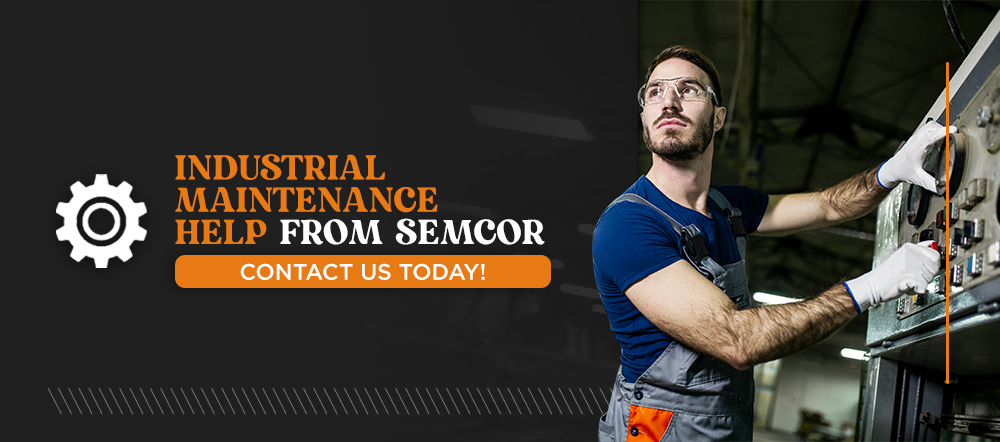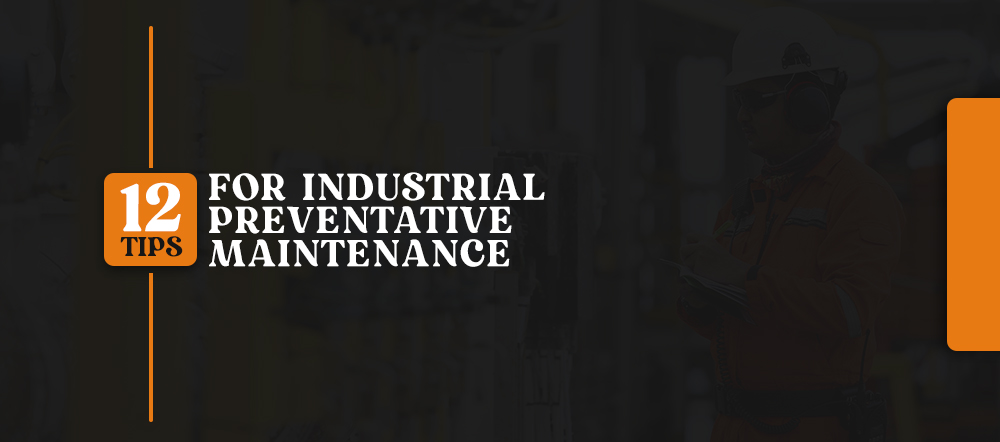
Have you ever heard the phrase “an ounce of prevention is worth a pound of cure”? That’s the idea behind preventative maintenance. In this guide, we’ll discuss the importance of preventative maintenance and how you can proactively maintain your industrial equipment, so you can avoid costly equipment failures and instead remain productive and profitable.
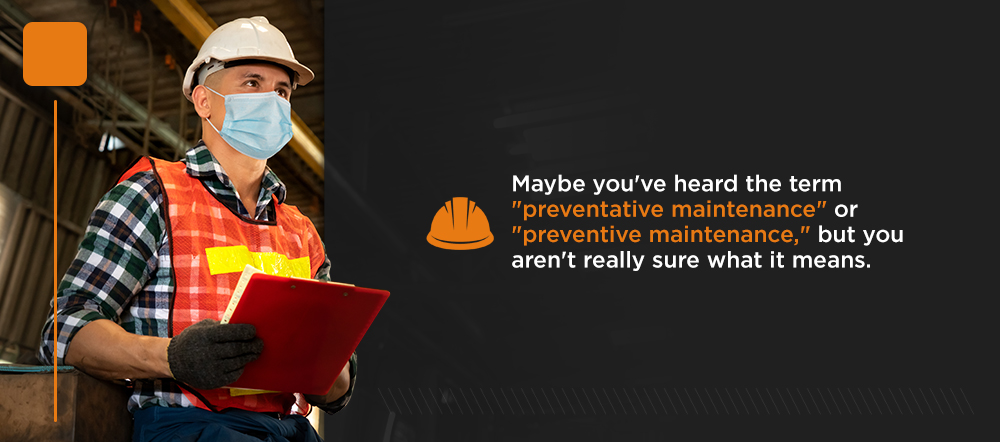
What Is Industrial Preventative Maintenance?
Maybe you’ve heard the term “preventative maintenance” or “preventive maintenance,” but you aren’t really sure what it means. Let’s take a moment to unpack the meaning of this important term. Preventative maintenance is a type of proactive maintenance, meaning you take on a more active role in preventing problems with your equipment rather than simply waiting and responding to problems as they arise. Waiting for problems to occur and then responding to them is known as reactive maintenance or corrective maintenance.
Some level of reactive maintenance is usually unavoidable. Equipment can experience problems that are difficult to predict at times, and when those problems present themselves, you need to respond in a timely manner. However, reacting to problems should be a minimal piece of your maintenance strategy. Preventing problems from occurring in the first place is a much more effective approach. Research has shown that companies pursuing quality tend to prioritize proactive maintenance over reactive maintenance.
So, what does preventative maintenance look like? It can involve inspecting, cleaning, servicing, repairing or replacing components as soon as they need it, so your equipment continuously functions at top performance. Giving your industrial equipment the ongoing preventative maintenance it needs can allow you to avoid inefficient operation and equipment failures.
A helpful way to understand preventative maintenance is to consider the way we care for our vehicles. You change the oil, replace filters, rotate tires and complete other maintenance tasks periodically to keep your car in good shape. If you skipped these preventative maintenance tasks, you should expect to take your car to a mechanic to fix or replace parts that were worn out because they weren’t maintained properly.
These are also the types of problems that result in an especially high invoice and take your car off the road for a while. In contrast, preventative maintenance tasks are usually completed relatively quickly and cost far less. The same principles of preventative maintenance you use to care for your car apply to your industrial equipment.
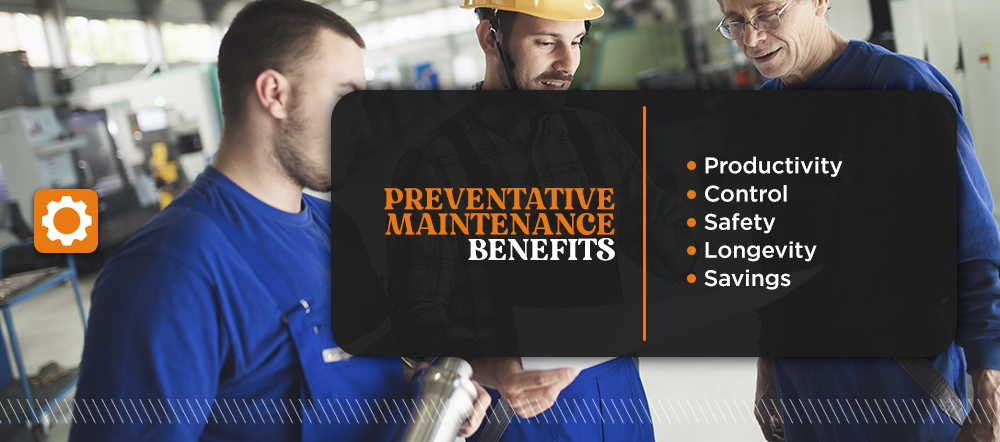
Preventative Maintenance Benefits
Compared to corrective maintenance, prioritizing preventative maintenance offers some important benefits to your company, including:
- Productivity: Unplanned downtime is one of the most costly problems a manufacturing facility can experience. Yet, when you react to problems instead of preventing them, unplanned downtime is the natural result. When you instead effectively prevent problems from occurring, you can maximize your uptime and maintain your production schedule.
- Control: Some may argue that preventative maintenance takes time out of your schedule, just as reactive maintenance does. However, when you carry out preventative maintenance tasks, you control the schedule. You can plan these tasks for times when it won’t interfere or will only minimally interfere with your operations.
- Safety: When equipment is not proactively maintained, it can pose a safety hazard. To keep your equipment operating as safely as possible, you need to regularly inspect and service it as needed. This can help keep your workers safe on the job and avoid injuries caused by equipment malfunctions.
- Longevity: Proactively maintained equipment tends to last longer. If you want to get the most out of your assets, you need to give it the ongoing maintenance it needs to continue functioning at peak performance for a long time. This is one of the many ways preventative maintenance rewards your company financially.
- Savings: There are other ways preventative maintenance can lead to significant financial savings. For example, the cost of preventative maintenance tends to be much lower than the cost to replace or service equipment that wasn’t properly maintained. Furthermore, maximizing uptime is a major way to avoid unnecessary costs associated with unplanned downtime.
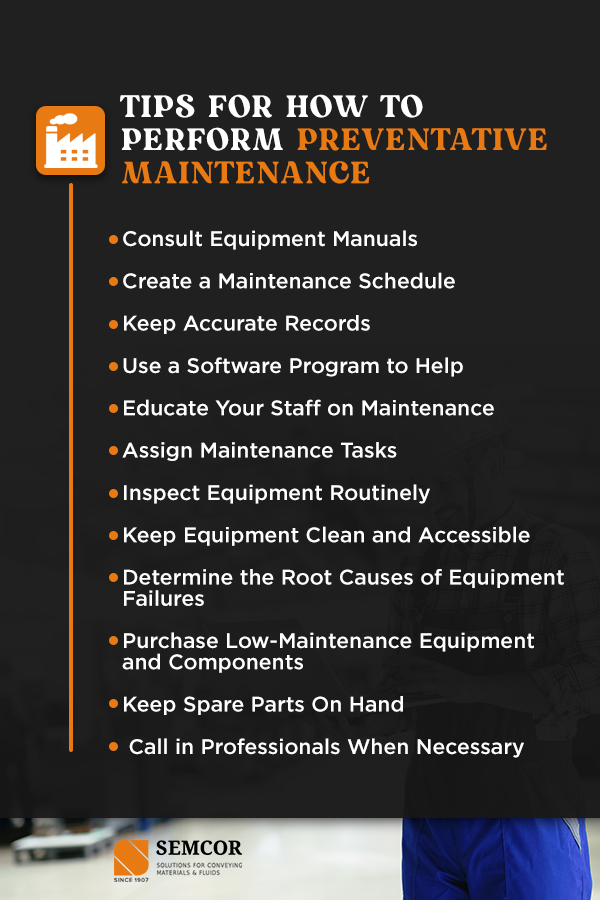
Tips for How to Perform Preventative Maintenance
Every company must come up with their own preventative maintenance strategy to address their equipment’s specific needs and to maximize their productivity. However, there are some general aspects of preventative maintenance that apply to nearly every industrial company. Follow these 12 tips to help make your preventative maintenance strategy a success.
1. Consult Equipment Manuals
To properly maintain your equipment, you need to understand each piece of equipment’s particular maintenance needs. This means it’s time to pull out those owner’s manuals that may be collecting dust on a shelf. Manufacturers know the best ways to keep their equipment in good working condition, so it’s smart to follow their guidelines. Abiding by the maintenance recommendations in the manual can also help you avoid mistakes that could void your warranty.
If you have questions about the best ways to maintain your equipment that the manual doesn’t answer, you can always ask the manufacturer directly to ensure you maintain your equipment in the most effective way possible.
2. Create a Maintenance Schedule
Once you’ve taken stock of all your equipment and its maintenance needs, you need to create a maintenance schedule. This schedule should include all the routine maintenance tasks for each piece of equipment in your facility.
In some cases, you can follow a set schedule of inspecting, servicing or replacing components once every week, month, quarter or some other measure of time on the calendar. In many cases, though, it’s better to go by operating hours. This can be trickier to schedule, but if you know how many hours a piece of equipment runs during a normal day or week, you can come up with a schedule that factors that in.
3. Keep Accurate Records
As workers complete maintenance tasks, make sure they take note of what they did. Record-keeping may seem unnecessary when it comes to maintenance, but it can help you stay on track.
Keeping a record of your maintenance tasks can also help you identify patterns over time and create more accurate, predictable maintenance schedules for the future. Finally, having a record of your preventative maintenance can boost your equipment’s resale value and can help you with warranty claims if a manufacturer doubts that you followed their maintenance guidelines.
4. Use a Software Program to Help
You can keep track of your schedule and maintenance records the old-fashioned way, with a spreadsheet on the computer or even a clipboard or notebook. However, some companies choose to upgrade to using a computerized maintenance management system (CMMS), a software program design to help you stay on track with your preventative maintenance plans.
Keep in mind that these programs are only helpful if you take the time to learn how to use them and take advantage of their features. Otherwise, you’ll be using your notebook or spreadsheet instead.
5. Educate Your Staff on Maintenance
If you’re trying to take a more proactive approach to maintenance, you need buy-in from management and from employees. You also need anyone who will be assigned maintenance tasks to know what they’re doing. The best way to meet these needs is through education.
First, explain how critical preventative maintenance is to your company’s day-to-day operations and overall success. You may want to use a past equipment failure that could have been prevented to drive the point home. Second, train any teams or individuals who will be helping with preventative maintenance. Make sure they know what to look for during inspections, how to service parts or even how to replace them if necessary.
6. Assign Maintenance Tasks
Make sure your maintenance plan specifies who will complete maintenance tasks. There are a number of ways you can figure this out. One method is to assemble a maintenance team that shares the responsibility of routine maintenance tasks. You can also take a more individualized approach, giving each employee a recurring task they’re responsible for or creating a rotation for employees to follow.
Whatever makes the most sense for your organization, just make sure employees know exactly what they’re responsible for, and follow up to ensure people are completing and documenting their assigned tasks.
7. Inspect Equipment Routinely
Scheduling maintenance tasks is great, but you also need to keep an eye on how your equipment is functioning. Industrial machinery and vital equipment like pipe and fittings experience wear over time at varying rates, so inspecting your equipment can help you stay on top of its condition.
You may need to look for different signs of wear and potential issues for each piece of equipment in your facility, so create an inspection checklist for each one. For instance, on a conveyor belt, you want to look for buildups of any type of residue, misalignments and other common issues. For piping, you would want to look for any signs of corrosion or loose fittings.
8. Keep Equipment Clean and Accessible
Cleaning your equipment regularly is an important aspect of proactively maintaining it. Make sure you use manufacturer-recommended cleaning products and methods. You may be able to combine inspecting and cleaning into one task.
You should also make sure your equipment is easily accessible so that you can clean, inspect and service your equipment regularly. Accessibility should be a key consideration during installation. You also need to keep your facility well-organized and avoid clutter that can get in the way of equipment.
9. Determine the Root Causes of Equipment Failures
If you have a piece of industrial equipment that fails, of course, you want to fix the problem as quickly as possible. However, in addressing the problem, make sure you also take the time to get to the bottom of what caused the failure. This allows you to prevent the same problem from occurring in the future.
For example, if a pipe corrodes, you need to determine what caused the corrosion. If the damage was caused by microorganisms, you should start treating the fluid contained in the pipe with antimicrobial substances. In the case of chemical erosion, you may need lined pipes. Other types of corrosion warrant their own solutions.
10. Purchase Low-Maintenance Equipment and Components
When maintenance takes on a greater level of focus in your organization, you will likely start to consider ways you can improve the efficiency of your maintenance strategy.
One way to do this is by choosing low maintenance equipment and components when it’s time to make a purchase. For instance, you may choose a pneumatic actuator over an electric one or choose to install thermoplastic-lined piping over a piping material that requires more cleaning and maintenance.
11. Keep Spare Parts On Hand
Consider the parts you frequently or occasionally need to replace. This can include consumables like filters as well as components that tend to wear out after a certain amount of use.
It’s smart to keep an inventory of these parts at your facility, so you have what you need when it comes time for a replacement. Otherwise, you may experience costly downtime while you wait on a part to be delivered to you. Even worse, if the part you need is out of stock, you could wait even longer. It’s smart to stay stocked up.
12. Call in Professionals When Necessary
While there are many preventative maintenance tasks your team can perform in-house, there are times when it’s best to entrust your equipment to a professional. Here are some examples of times you should outsource maintenance to someone who better understands your equipment:
- You’re experiencing a recurring problem, and you can’t identify the root cause.
- You need to fix or replace a part that is difficult to access and requires some disassembly.
- You don’t have the specialized tools necessary for a maintenance task.
- You know something is wrong with your equipment, but you’re not sure what.
These are just a few scenarios where it makes sense to hire a professional technician to service your equipment. Any time you feel out of your depth, it’s wise to call in a professional.
Industrial Maintenance Help From SEMCOR
When you need some professional maintenance help, you can trust SEMCOR. We are a St. Louis-based company providing a wide range of products for fluid handling and material handling, as well as maintenance services. Our service professionals have the high level of expertise needed to help you identify and address problems with your industrial equipment, so you can proactively maintain it. Our staff is available 24/7, so you can always turn to us for your emergency maintenance needs, as well as routine or preventative needs.
When you purchase products from SEMCOR, you know you’re getting the benefit of products designed to be low-maintenance and durable. If your facility is located in Illinois, Indiana, Kentucky, Iowa, Kansas or Missouri, contact us online today or call us at (314)300-0432 to see how we can provide you with the equipment and services to help with material or fluid handling at your facility.





